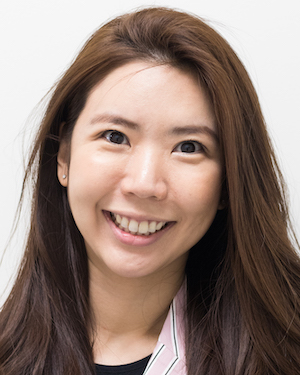Excited for the Future

April 27, 2020
by Catherine
As I wrap up the Spring semester and prepare to depart from my role as the OTD ambassador, I have reflected on impact pursuing the clinical doctorate degree has made in my future as a clinician, and how this particular year of the program has shaped how I view occupational therapy as my career choice. To say the least, this has been a whirlwind year of change, achievements and unforeseen challenges. Transitioning from the master’s program into the OTD, I have transitioned from an OTS to an OTR/L, found new inspiration and meaning in our profession through my residency in support of the Occupational Science Symposium, and have alongside my Trojan family, faced the unforeseen challenges of COVID-19 as a community.
It is no doubt that this novel global pandemic has drastically changed our daily occupational routines. The normalcy of occupations may change when we re-emerge from social distancing, but we are adaptable. As occupational therapists, I am grateful to my mentors, peers and colleagues that have provided the insight to make these changes positive, and training guide them through meaningful occupations. We are armed with clinical reasoning, therapeutic communications, and the OTD has enriched my experiences to see through a holistic lens rooted in evidence-based practice.
In the seminal paper, “An Introduction to Occupational Science, A Foundation for Occupational Therapy in the 21st Century”, Yerxa et al. (1990) wrote:
The concept of occupation and its application in occupational therapy are great ideas whose time has come. For, one of the greatest challenges society faces today is understanding the relationship between engagement in occupation and health. We are filled with excitement about what this idea has to contribute to humankind in the twenty-first century. It has the potential to improve the lives of legions of people, both people with disabilities and other people, if we can nurture its development and maturation. (pp.1-2)
It is as though the early founders of occupational science had a crystal ball. Because as we collectively re-integrate into our society and continue to face safety measures to guard against COVID-19, the challenges we face will no longer solely depend on our infection rates, but how to thrive and live well in the process. Like the founders were 30 years ago, I am excited for the possibilities that lie ahead in our profession. As health professionals we stand in solidarity, focused on our short-term goal of the upmost importance, contributing our part in the efforts to flatten the curve; but we also have the long-term goal. The long-term goal to live our best lives, through the engagement in occupations, towards improvements in the health and well-being of our clients and communities, as we OTs do best.
I continue to be grateful and inspired by our Chan community’s resilience, hope and compassion, and continue to look forward to the contributions future Trojans will pave the way for in the future. It has been an honor and privilege to share my journey through the OTD. Fight on!!
Reference
Yerxa, E. J., Clark, F., Frank, G., Jackson, J., Parham, D., Peirce, D., . . . Zemke, R. (1990). An introduction to occupational science, a foundation for occupational therapy in the 21st century. Occupational Therapy In Health Care, 6(4), 1-17. doi:10.1080/J003v06n04_04
⋯
Next by tag Life Hacks ⟩
⋯





